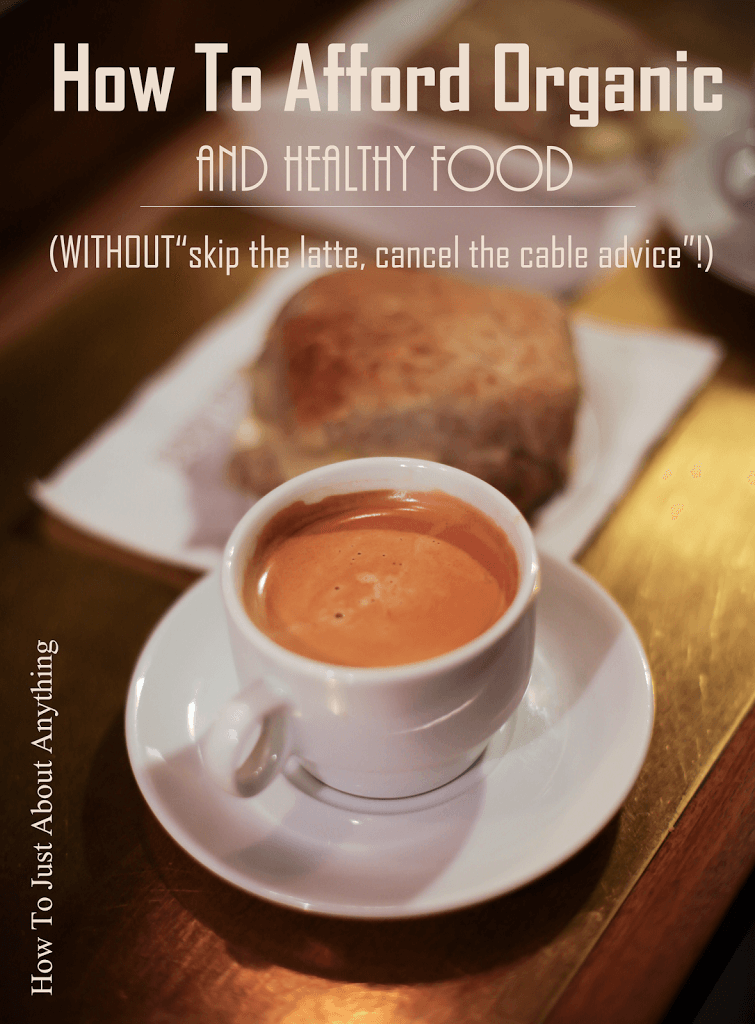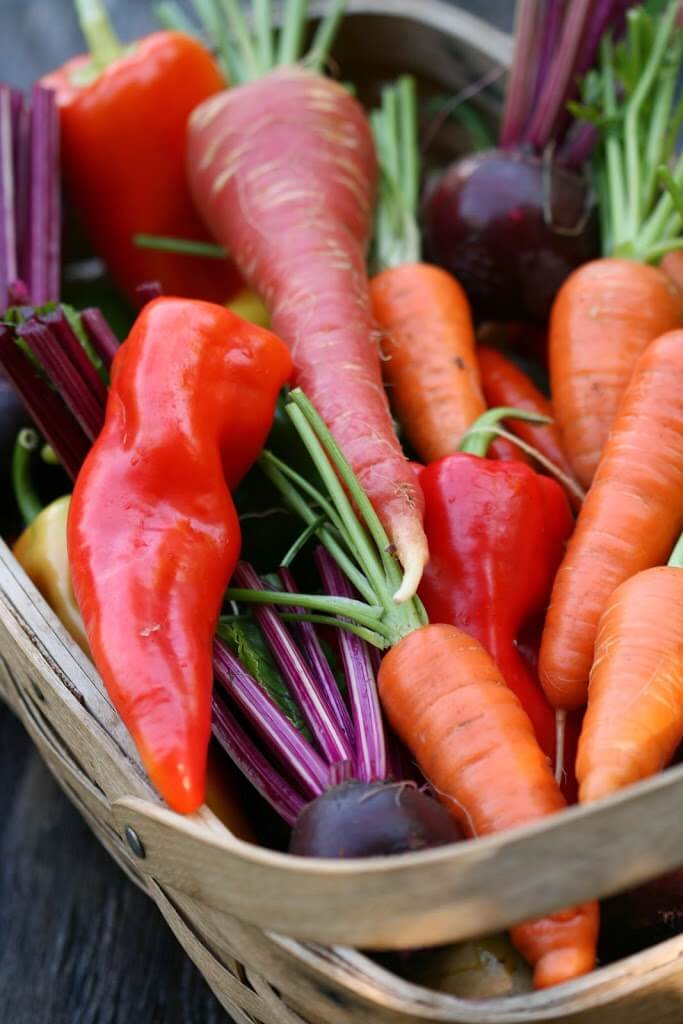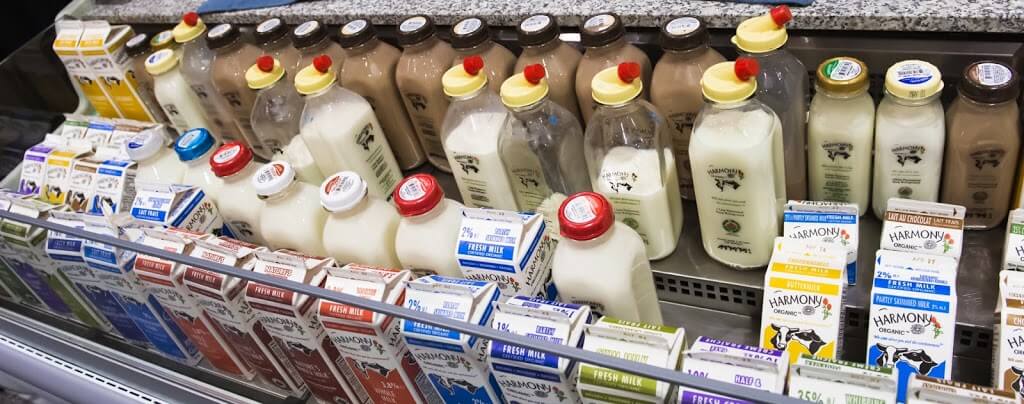Anyone who has ever been to the popular grocery store Whole Foods knows that organic and healthy foods can cost an arm and a leg. A $4 box of organic sprouted pasta for two, a $6 jar of organic tomato sauce and a few of those almond flour macaroons that you couldn’t pass up along with the rest of the groceries can easily eat up $200-300. And yes I know this because I’ve done it on several pain inducing occasions!
So how can someone afford to eat healthy when they’re on a budget? Also assuming that said budget doesn’t allot 50% of your paycheck towards food. If you’re like me you may be sick of hearing the same tips on how to afford better food.
- That Starbucks coffee you buy everyday costs more than a carton of organic eggs
- You’re willing to spend money on Comcast but not clean food
- A bag of organic apples costs less per pound than the bag of chips
- Just bring your lunch to work a few times a week instead of paying the $10 to eat out.
- Healthy food costs less than getting cancer
But what if you DON’T buy Starbucks because you can’t afford it? And what if you DON’T have cable because it’s a luxury you can’t afford? And what if you’re already bringing packed lunches to work EVERY day?
Our family has been able to eat healthy foods for as little as $30 a week. Part of that has to do with what resources are available in our area, but these are tips that can be applied to any situation.
Skip the Organic Cookies
Telling yourself that $4 really isn’t that much doesn’t make up for the fact that that small box of organic cookies will be polished off in a matter of minutes once it’s opened. The same goes for the prepackaged kale chips for $3 a serving and the organic coconut juice for 5 cents a sip. It may not seem like that much, but prepackaged health food adds up…fast.
Don’t go Shopping on Saturday Night
Prime shopping times like the weekends are when prices are higher at the store. Our local Kroger marks much of the produce down by 50% every Tuesday evening, because that’s when the new stock comes in.
They also mark down the prepackaged organic food on Tuesdays. Even with the reduced price though, the cost per serving is still way higher than buying more simple foods.
Talk to the produce manager (and other department managers) at your local store to find out when they restock and if they markdown. They want happy customers, so I’ve always found them readily helpful with this information.
Save Big at the Farmer’s Market
Fruits and veggies taste best when they’re in season. They’re also more reasonably priced. Yet, when a coveted item like peaches debutes at the farmers market in summer, prices are likely to be higher than when it’s nearing the end of the season.
I frequently buy a bushel or two of fruits or veggies at a steeply discounted price because they’re at their peak or close to over it and need used right away. Growers will also be inclined to give you discounts at the end of the day in order to get rid of the produce before closing. Buying a large amount at once also tends to get you a discount.
Using these methods at the farmer’s market make it very economical to stock up and preserve enough of these items to last until next season. I find this to be a much better strategy than just buying a random variety of a weeks worth of produce.
Plus these foods are locally grown and frequently pesticide free, even though they aren’t certified organic. Just ask around to find which farmers grow in ideal conditions.
Grow Your Own
This can be as large as a completely self sustainable homestead, or simply a few containers on a windowsill. A box of organic lettuce at the store is easily $5. Fresh herbs are even more expensive, often adding up to $3-4 for a small bunch at the grocery store.
Growing just a few bunches of lettuce and a small selection of herbs on the kitchen windowsill is not only economical, but super convenient.
Some kitchen scraps, like celery and chive roots, can also be replanted and cheaply grown at home. Here’s a list of scrap produce that can be given a second life.
Eat Less Meat
Saving money on protein doesn’t mean subsisting off of beans and rice for life. But there are definite ways to stretch your meat.
- Cook a whole pastured chicken (about $15) and use it in soups, casseroles and stir fry’s. This will last several meals. Once the meat is gone use the carcass to make nutrient dense bone broth.
- Only eat meat once a day. Have eggs, beans, nuts and other cheaper sources of protein for the remaining two meals.
- Use cheaper cuts of meat, like ground beef mixed in with soups, stir fry’s and the like.
- Liver is cheap and an incredible source of Iron and B vitamins. Don’t like the taste? Use it with grund beef in meatballs and meatloaf.
- For taco night use a mix of seasoned beans and ground beef to stretch your dollar.
Make Broth with Scraps
Organic broth at the store costs several dollars per carton, and you usually need two or even three per recipe. Even the natural ones almost always contain yeast extract, just another name for MSG hiding in your food.
Chicken, beef and fish broth can all be made with scrap bones and a bit of seasoning, but it’s just as simple to make vegetable broth. Save onion and garlic skins, carrot peels, celery leaves and other scraps leftover from using veggies. I put these in a bag in the freezer until the bag is full enough to make a broth.
Simply dump the bag into the crockpot, add a generous amount of salt, a few herbs and cover with water. Cook on low for 8-10 hours for a fragrant broth.
Eat Gluten Free Without Eating Gluten Free
If you’re family is dealing with gluten allergies, the alternative copycat foods can be very tempting. However, gluten free breads, donuts, bagels and the like are way more expensive than their glutened counterparts. Often these items are also full of unhealthy or nutritionally dead ingredients, like white rice flour, soy and starches.
Making your own gluten free breads either uses the same unhealthy ingredients, or expensive ones like almond flour. With almond flour at $9 a bag, a small loaf of this bread can easily run you upwards of $5.
Potatoes, rice and squash are healthier and much cheaper carb alternatives to gluten free breads.
Skip the Tofu Cheese
Similar to gluten free alternatives, dairy alternatives are also very expensive and not so healthy.
Nut and coconut milks at the store not only cost a lot, but usually contain ingredients like carrageenan. Carrageenan is frequently used to induce inflammation in animal studies where researchers are trying to test anti inflammatory drugs.
You can easily make rice and nut milks at home for cheaper. This recipe for rice milk will only set you back about 50 cents for an entire gallon.
We no longer use alternative milks though since we’ve found that local, raw milk doesn’t irritate my son’s milk allergy. Read about the benefits and safety of raw milk here.
Want More?
There’s way too much information on this subject for just one article, so stay tuned for part two. More ways to make organic affordable and what a weekly shopping trip/meal plan would look like using these tips.
How do you save money on real food?
Get FREE access to my newsletter, exclusive coupon codes, and links to my recommended natural living products!
Get FREE access to my newsletter, exclusive coupon codes, and links to my recommended natural living products!




My biggest real food budget saver is using the whole chicken – cooking 2-3 whole chickens at a time and freezing the meat, using the whole carcass for making bone broth, and then stretching any of my meat in soups. We rarely have just a chicken breast or just a chicken dish. It is usually soup or stir fry or casserole etc.
Wow! What a great article. Definitely an eye opener! I always compare an organic item to the $5 I used to spend on a Frappuccino…puts everything into perspective quickly. 🙂
Pinned:)
Great suggestions and we all need them to help maintain our budget!
These are great tips…and reminders for those of us that get into bad habits.
Great suggestions I am sure so many will appreciate!
This is great! Thanks for sharing. Great conversation starter, too. Will be sharing on my FB page. 🙂